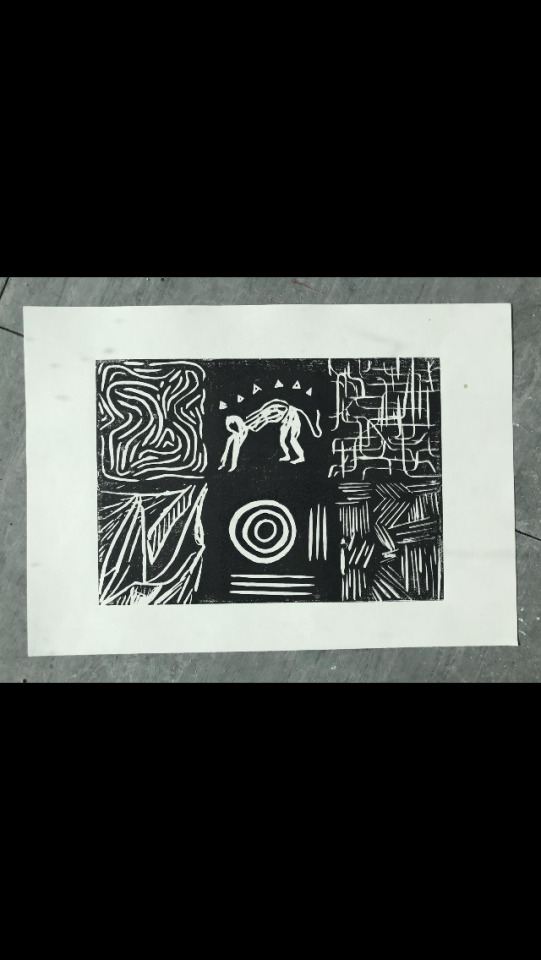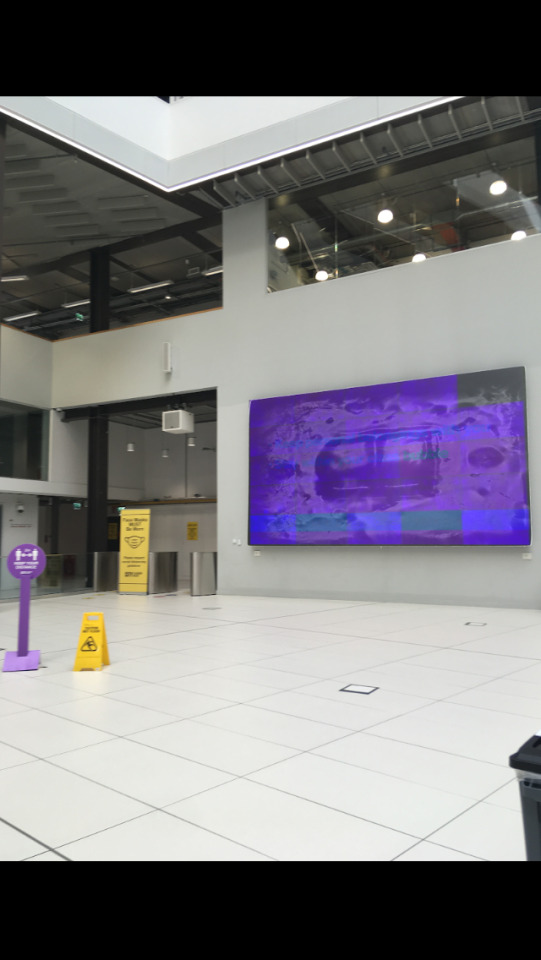Exploring the ephemerality of objects found in nature. Inspired by daily walks in nature during lockdown, this project seeks to capture and preserve plants, creating imperishable ornamental replicas of ephemeral objects.
Don't wanna be here? Send us removal request.
Photo









Final 10 Images - 1 video to be uploaded separately
0 notes
Text
Critical Review
My work explores the concept of transformation. In the beginning it was my intention to capture the ephemeral, an idea which I had whilst on a walk. Walking had become a kind of therapy for me during the lockdown as I had been confined at home - I have been saying in jest for the past year I’m on house arrest and my walks are my yard time, but I concede that’s an over exaggeration, even if it felt like it sometimes. The act of walking was my slice of the day where I could be on autopilot; it allowed me the time to just walk and think. Being in nature, I was observing the plants and flowers and began collecting them. I wanted to preserve my collection, to shift them from ephemeral to permanent objects. I primarily used air drying clay to achieve this, which I pressed my flowers into to create moulds from which I could take a positive cast. I had spent a few months perfecting this technique and working to this process and had eventually stockpiled a collection of botanical tiles in different colours and sizes, but my concept had stagnated somewhat by this point, similarly my daily walking route which I had enjoyed had begun feeling like an obligation. The repetition became tedious and is analogous of how I was feeling during lockdown; autopilot had lost its novelty. I had realised that my daily practice was like a production line, where I was manufacturing my art in batches from a mould and repeating the process. I began thinking about the modern world and particularly how technology and mass manufacturing had played a vital role in the worldwide response to the pandemic. I was interested in where the line is drawn between functional design and a work of art and sought to explore this in my project, which saw its own transformation going forward. The everyday object reimagined as fine art has been a subject of intrigue among artists and art lovers since the early Twentieth Century. Since the ready-made’s of Marcel Duchamp, the bounds of art have been redefined. The subject expanded in the 1960’s with the emergence of the Pop Art movement, with such artists such as Claes Oldenberg and Andy Warhol who created whimsical replicas of common household items, transforming the functional object into ornamental sculpture. In particular, Warhol’s work was a response to consumer culture, which transformed certain household brands into art world icons synonymous with his name. By looking at Dadaism, Surrealism and Pop Art, we can see some of the varying ways in which objects have been used in the past. The object form has been used as a means of expression of self, as a form that can be metamorphosed into things created from imagination, as a technical means of expression, as a social statement on society, and as a means of creating art which questions art itself. (Hanna, 1988) Today, the everyday object as art remains a pervasive subject in contemporary art. Tokyo-based artist Makiko Azakami is one such artist who transforms everyday objects by using only paper for her lifelike sculptures; ‘through careful cutting and meticulous handcrafting, Azakami breathes new life into humdrum objects and creates pieces that are deceptively fragile and extraordinarily detail-oriented’ (Richman-Abdou, 2016). Korean artist Do Ho Suh creates lifesize object-replicas of fittings and appliances around his apartment using wire and polyester fabric netting. The use of these materials transforms the objects from functional to ornamental whilst retaining their defunct detail, reframing the domestic object, and wider domestic space, as sculpture. ‘The transparency of the fabrics…is important conceptually because I’m trying to communicate something of the permeability in the ways in which we construct ourselves’ (Suh, 2020). Other contemporary artists use found objects in their work, which serve a specific purpose that the artist abandons, choosing to elevate the mundane to the realm of fine art, and dissolve the boundaries between “high” and “low” forms of culture. (Artnet News, 2017). In my own practice, I chose to study the everyday object of the lightswitch, the idea of which was suggested to me during a presentation of my work. I had built my installation around a lightswitch on my studio wall, an unconscious choice on my part, perhaps going to show just how on autopilot I was. I was interested in replicating the lightswitches around my home using subversive materials and experimenting with installations. I began by taking clay impressions of the lightswitches around my home from which I could make positive casts. This made me think about automation; I felt that the repetition of taking casts from a mould was similar to a production line, and I was the machine, similar to Warhol’s production line process of silkscreen printing, as Bergin writes: ‘The Machine is, to the artist, a way of life, representative of a unique field of twentieth-century experience, and all of Warhol’s art is striving to express the machine in the machine’s own terms’ (Bergin, 1967). Perhaps all art has an agenda; is any art made just for the joy of it? Or is it just to fulfil some demand? I began to wonder if all art, except for the earliest cave paintings, was produced purely to be consumed. If Warhol’s brillo boxes represent the collapse of the boundary between artistic creation and mass production (Baum, 2008), then where exactly is the boundary? I came to the conclusion that any commodifiable artwork is a product, and creating art is just another form of production for consumption. When I had my finished clay tile with a porcelain effect painted finish, I installed it on my kitchen wall and it at first glance appears to be a standard lightswitch, however when examined up close the viewers expectation is subverted, as you can see that it is a handmade replica. The functional design of the lightswitch is reimagined through the materiality of natural clay, transforming the object from a functional design into an ornamental replica. I had made many clay lightswitches already, and wanted to explore other subversive materials to utilise. Inspired by Rachel Whitereads resin replicas of doors, I began making coloured resin casts from my existing silicone mould, adding a different coloured resin pigment each time. Displayed as stacked on backlit shelves, the work invites the viewer to peruse as though they were in a supermarket, highlighting that art is another form of production for consumption in the modern world. I then began thinking about scale, but this time I wanted to use the intangible material of light itself as my medium. Using my transparent coloured resin tiles and a light projector, I projected onto my studio walls. This opened up a door to working digitally, working with media such as video and photoshop. Working in this way allowed me to explore scale as freely as I liked without time or space constraints. I began thinking that digital media is an imitation of the real thing. My projections, for example, are not really lightswitches, they are replicas of lightswitches made from the material of refracted light waves. My video gifs and my photoshopped site specific work are just information converted to binary numbers and translated into pixels on a screen. I think in this way, digital and electronic media are the ultimate subversive material. Overall, my project experienced a dramatic transformation. In the beginning, lockdown had only just begun and it was a new experience. Fourteen drudgerous months later, I am not the same person I was then. The whole world has had its own dystopian transformation, where we now so heavily rely on technology to survive. We have surrendered authentic experience for a pale imitation of the real thing. Our New Normal is just a replica of the life we left behind, subversive in the way that at a superficial glance all remains the same, but on closer inspection is just a substitution. As I made my tiles I was a machine, so too have we become machine men; just pixels on a screen or voices on the end of a line, a replica of the blood and cells and sinew and breath and acne that made us really human.
Artnet News In Partnership With Cartier, (2017) ‘11 Everyday Objects Transformed Into Extraordinary Works of Art’, artnet.com. Article published May 9, 2017. Available at: https://news.artnet.com/art-world/making-art-from-mundane-materials-900188.
Baum, R (2008) ‘The Mirror of Consumption’, essay published in Andy Warhol by Andy Warhol . Available at: https://www.fitnyc.edu/files/pdfs/Baum_Warhol_Text.pdf. p.29.
Bergin, P (1967) ‘Andy Warhol: The Artist as Machine’, Art Journal XXVI, no.4. Available at: https://www.yumpu.com/en/document/read/8274194/andy-warhol-the-artist-as-machinepdf-american-dan. p.359.
Hanna, A (1988) OBJECTS AS SUBJECT: WORKS BY CLAES OLDENBURG, JASPER JOHNS, AND JIM DINE, Colorado State University Fort Collins, Colorado, Spring 1988. Available at: https://mountainscholar.org/bitstream/handle/10217/179413/STUF_1001_Hanna_Ayn_Objects.pdf?sequence=1
Richman-Abdou, K (2016) ‘Realistic Paper Sculptures of Everyday Objects Transform the Mundane Into Works of Art’ , Mymodernmet.com. Article published October 20, 2016. Available at: https://mymodernmet.com/makiko-akizami-paper-sculptures/?context=featured&scid=social67574196&adbid=794911171832901632&adbpl=tw&adbpr=63786611#.WB3vIQMclAU.pinterest.
Suh, D H (2020) HOW ARTIST DO HO SUH FULLY REIMAGINES THE IDEA OF HOME, crfashionbook.com. Article published MAY 22, 2020. Available at: https://www.crfashionbook.com/mens/a32626813/do-ho-suh-fully-artist-interview-home-korea/
0 notes
Text


Testing some installation ideas for the degree show
0 notes
Text

Collaboration linocut
Six students worked together to make this lino print. My contribution is at the bottom centre.
0 notes
Text
Site Specific 2 & 3


Finished results
I really like how these turned out! I think that the stained glass has added a playful visual feel to the stairwell and to the glasgow skyline. The functional object has been transformed into art in an unexpected place. I will take this idea further.
0 notes
Text



Photos of the process of the making of my digital stained glass piece.
I overlaid my images over the windows and the light coming through them, then in the dropdown menu in the layers tab I changed the overlay opacity and vibrancy to make the stained glass as realistic as possible.
0 notes
Text

Site specific 1
Playing with photoshop to digitally visualise scale. Overlaid over the jumbo screen in the college’s foyer.
0 notes
Text



I wanted to place my lightswitches around the college and because it was a sunny day I propped them against the window to let the light through. This gave me the idea to make a ‘stained glass’ site specific piece. I began by printing my images onto acetate and sticking them to the window. I would like to make a large scale window film, so I will work on photoshop to get a visual idea.
0 notes
Text


Tried another cyanotype, this one got washed out.
0 notes
Text
0 notes
Text
0 notes
Text
0 notes
Text
I downloaded a video app called InShot and spent today making some gifs.
0 notes

